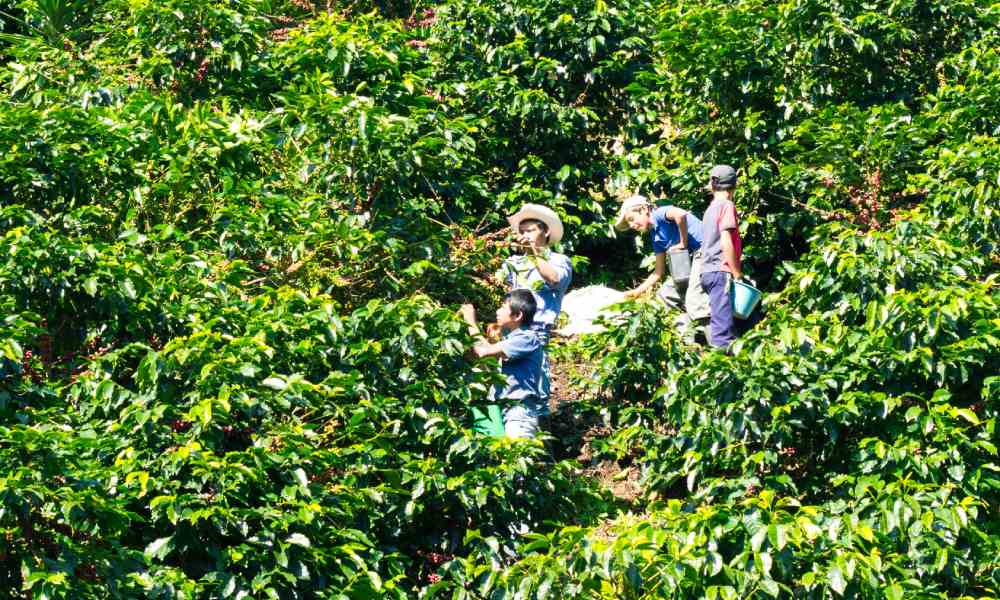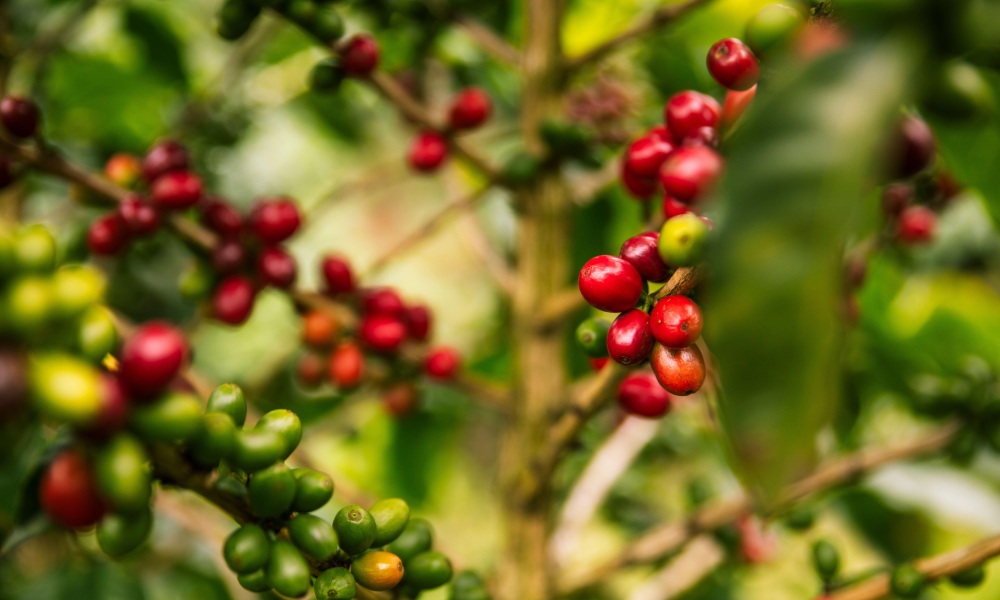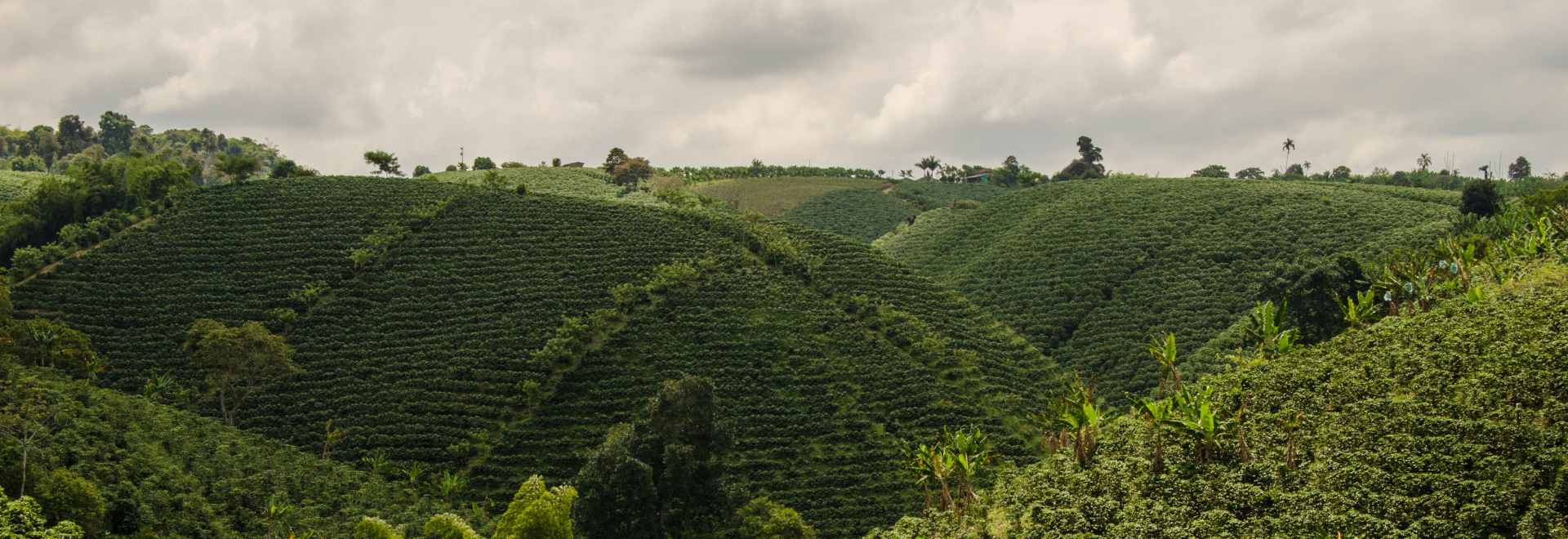Why does high-altitude coffee taste different?
High-altitude coffee has traditionally been associated with sweeter and more complex flavours. Matt Haw speaks with Daniel Morales Espitia to find out why.
A coffee’s “varietal character” is shaped by its microclimate, including soil quality, temperature, rainfall, and sunlight exposure. Altitude, in particular, plays a crucial role in determining a coffee’s taste, with higher-altitude coffees generally considered higher quality than those grown at lower altitudes.
“The role played by altitude is just one of many equally important variables that are interrelated,” says Daniel Morales Espitia, independent coffee quality advisor in Colombia. “Altitude will usually be an advantage for certain varieties that can be adapted to those conditions – which are generally wetter and colder.”
This is why specialty coffee roasters often provide information about the elevation of a specific coffee. They may mention the farm’s altitude in meters above sea level (masl) or label the coffee as any of the following:
- Altura – Altura means “height” in Spanish and is used to describe high-grown, or mountain-grown, coffees
- SHB – “Strictly hard bean” usually refers to coffee grown at altitudes above 1,200 masl. SHG, or “strictly high grown” is often used interchangeably
- HG – “Hard bean” refers to coffee grown at altitudes between 900 and 1200 masl. HG, or “high grown” is often used interchangeably.
Despite these labels, consumers might not always understand why altitude is so important, and how it affects the coffee they are buying.

Why altitude is important
Crops take a longer time to grow at higher altitudes. As Daniel points out: “Altitude directly affects the development of any plant”.
The longer the coffee takes to develop, the more complex sugars it produces. This extended maturation process results in sweet profiles with greater flavour clarity. This is also why high-altitude coffees have higher bean density.
“In coffee, we have to take into account that at higher altitudes, metabolic development slows down and the fruit will ripen better,” says Daniel. “This will probably be reflected in a cleaner, brighter and smoother sensory profile.”
Additionally, higher elevations typically offer better drainage for crops than lower areas of the watershed. This means that less water is retained within the beans, leading to a higher concentration of sugars within the fruit.
Under these conditions, coffees develop more distinct flavours. Those grown between 1200 and 1500 masl commonly exhibit notes of citrus, vanilla, and cocoa. Costa Rica, Indonesia and certain regions of Mexico are examples of where coffee is grown within these altitudes.
Coffees grown above 1,500 masl become increasingly complex and can showcase a range of acidic, floral, berry, and wine-like notes. Notable regions include East Africa, Colombia and Guatemala.
In contrast, plants grown at lower altitudes experience higher temperatures and more light exposure, speeding up the plant’s metabolic processes. The results are bolder and often more bitter flavour profiles.
As such, the question of why high-altitude coffee tastes different is “simply due to the complexity in the cup”, says Daniel.
“Possessing that freshness and cleanliness of a profile from the highlands is simply magical.”

Will they always have the high ground?
While a coffee may come from a high-altitude region, it’s important to note that this alone doesn’t guarantee a high-quality cup; various factors during roasting and brewing can still lead to potential issues.
In roasting, a certain level of skill is required to unlock the full complexity of the coffee. “It will always be a challenge to roast high-altitude coffees,” says Daniel. “They are denser and also have high humidity, especially here in Colombia.”
Density plays a role in the bean’s ability to absorb heat – high-altitude coffees are more heat-resistant. This poses a challenge for roasters aiming to hit the sweet spot and balance their flavours.
High-altitude coffee can also be more challenging to brew. Higher bean densities often require a finer grind size, as desirable flavour compounds can be more difficult to extract. This can lead to issues such as channelling, especially with espresso.
At the same time, the superior status of high-altitude coffee may be under threat.
Many low-altitude, cheaper coffees are used for experimental processing methods that are gaining in popularity. These methods can develop fruitier and more distinct flavour notes, potentially presenting an alternative to the complexity previously offered only by high-altitude coffees.
However, some would argue that there is plenty of room at the top. With the demand for specialty coffee booming, there is space for high-altitude coffees and experimental processed coffees to coexist.
Ultimately, the way that high-altitude coffees naturally develop complex sugars, giving coffee its range of flavours, is what pulls many people into specialty coffee. For purists, it’s the reason that those coffees may continue to reign supreme.
New Ground Coffee
Want to read more articles like this? Sign up for our newsletter!








